Like Cleaning Your Car? It's Time To Ditch The Fancy Clay Bars And Get A Proper Polishing Wheel

Pride in a shiny ride is the glue that binds all car enthusiasts together. It doesn’t matter if you’re team JDM or American muscle, German sedans or Italian exotics. Even big rig drivers like to polish their trucks after a long day on the road.
As far as I’m concerned, detailing is the only true definitive indicator of a proper auto enthusiast. You don’t have to wrench on cars or buy go-fast parts. Hell, the car doesn’t even need to be fast. But if you enjoy spending a warm afternoon making your ride shine like the diamond it is, then congrats. You are officially a car enthusiast.
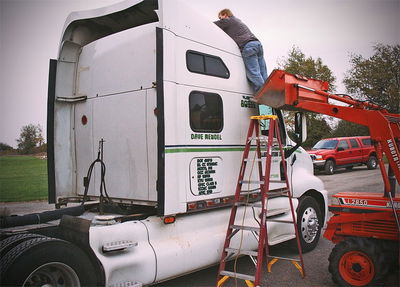
I’m willing to bet a lot of you bust out a clay bar every so often to pull sap, crud, and other contaminants out of the finish. And then you have the really expensive “deep” cleaning products that are ultra-formulated with hydrologic kryptonex unobtanium bonding agents to protect paint against bugs, UV rays and wayward meteors striking from outer space. I’ve encountered plenty of car guys who spend days with such products, meticulously cleaning their rides over and over. I suppose there’s really nothing wrong with that.
Well, aside from it being a monumental waste of time, especially when you can do so much better with a high-speed polishing wheel. I spent six years as a professional auto detailer for a used car dealership. The only time I spent a weekend spiffing up a car is when I had to gut the entire interior to remove enough dog hair to make another dog. Even the dirtiest car with the worst looking paint only ever took me the better part of a day to make awesome.
The reason I want you to put down the clay and bevy of high-dollar polishes is very simple. Products can clean the car, but a high-speed polishing wheel can do the same thing much quicker, and it can actually mend a damaged finish. And if a car is more than a few months old, the finish probably has some damage even if you can’t see it directly. Not only will mending that give you a better shine, it will also make the car easier to clean and shine in the future.
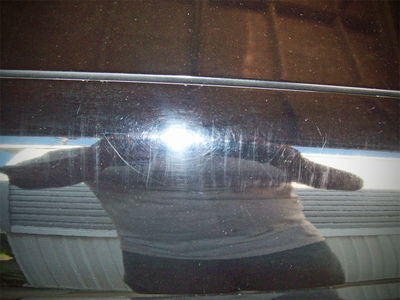
To better explain this, let’s talk about hockey. Yes, hockey.
The skaters hit the rink for 20 minutes, and when they break for intermission, out comes the Zamboni to smooth the ice. Why smooth the ice? Because 20 minutes of skating scars it up with cuts and ridges that make it harder to skate. The paint job on your car is just like the ice - months of driving creates microscopic cuts and ridges that you can’t necessarily see, but they can still dull the shine. More importantly, those cuts and ridges catch and hold contaminants like tar, sap, sand, road grime, and industrial fallout - tiny metallic particles that will create tiny rust specs in the paint.
You can take a clay bar to the finish and remove those contaminants, but the clay doesn’t do anything about the ridges in the paint that hold them. Often times, running the clay over the paint actually does more damage, even if you use a lubricating spray. The very best hand applied products won’t help either, and actually, such products can be very tough to remove if the paint is full of those microscopic cuts and ridges. Ever applied a coat of wax that just didn’t want to buff back out? Now you know why.
That’s why I skip all those products and just go right to my trusty wheel. It will remove contaminants just like the clay, but it’s also a Zamboni for the paint - smoothing everything back out for a nice shine. Not only that, once you get used to the wheel you can remove large visible scuffs and scratches, refinish faded plastic, shine up rubber trim, and polish glass. With a buffing wheel and a bit of experience, you can give new life to flat, sun damaged paint jobs most would consider beyond saving. It’s a skill every proper petrolhead should know because it’s not that hard to do well, and thusly equipped, you can work detailing miracles no driveway warrior with a clay bar or hand-applied wax ever could.
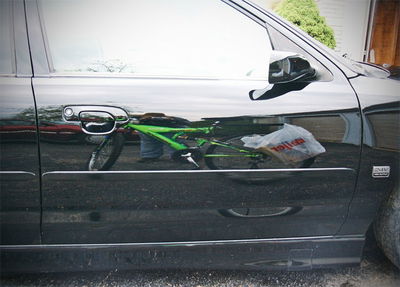
The downside? If you’re not careful you could literally burn the paint off your car, but don’t fret. That only applies when using aggressive compounds and higher speeds to really attack damaged paint. Don’t be scared to give it a try; as long as you use a fluffy wool pad, keep the speed on its lowest setting and use a basic, non-abrasive cleaner wax, you’ll have a better chance of winning the lottery than mucking up the paint. Do be mindful of rubber trim though; odds are you still won’t scuff it up at low speed, but it’s far more sensitive to such things than paint. And be careful around edges - paint is always thinner on edges.
And that’s how you get started in the wonderful world of detailing with a high-speed polishing wheel. You can find decent quality polishers for less than £70 or $100, and pads usually cost you a tenner. Spend some time, go slow and get used to the nuances of a wheel. Gradually start working up to higher speeds and abrasive compounds, and you’ll be able to turn this:
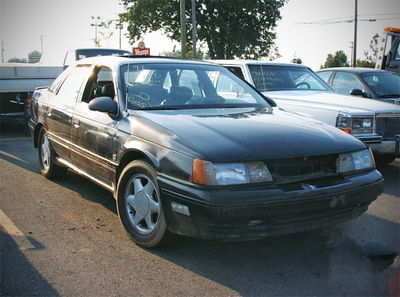
Into this:
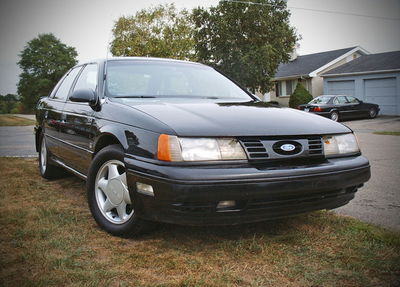
That was a 1991 Ford Taurus SHO I bought for $400 at an auction. I replaced the missing grille obviously, and new headlight lenses came shortly after this photo. I dabbed a bit of black touch up paint on the front bumper, but the rest was accomplished by a day of wet sanding and buffing. Let’s see a clay bar and magick formula ultra 5000 wet shine wax do that.
Got detailing questions or tips? The nice thing about detailing is that it’s subjective - there are a hundred ways to make a car shine and they all work. Let’s hear your techniques.













Comments
Nice job mate
Man, of course a clay bar will not make the same effect than a high-speed polishing wheel, it’s not the same thing, plus for the price of your polishing wheel I have the full set detailler, of course on a damaged paint this will not be very effective, but I have good result on my car, by hand.
Damn that’s some excellent work…
I like to use a foam waffle pad personally. I had a mini heart attack once when the velcro let go and the pad flew off in use and left the buff velcro surface (luckily the fluffy side) spinning on the paint of my S15’s bonnet. Now I love that car, and I thought I’d left a heap of deep round scratches no the bonnet. Luckily it hadn’t really done that much damage and I hand buffed it out. Be careful guys…
After a painter painting the entire car wrong and covering it in specles and orane peel I wet-flatted and polished the whole car.
finished product: https://www.carthrottle.com/post/wvlvbq7/ (Sorry for the spam but i could not upload anymore images to this comment)
Hey mate, I’m in a similiar situation with a newly painted car. Would take it to a pro but thing is… recently everyone is a pro until you see the result of their work and the results usually sting your wallet. What does wet-flatting mean?
I have question, I want to start detailing my car. What should I buy and what to do?
1+ should have mentioned basic beginner set of tools and waxes n stuff
It all depends on how far you want to go with it? But a good start is finding good quality products to use (for example I use Autobrite Direct). To give you an idea though this is what I use.
Pressure washer
Snowfoam (prewash) and lance.
Shampoo using the 2 bucket method (1 bucket with shampoo and the other just water for rinsing the wash mitt).
A decent wash mitt or microfibre noodle/cloth.
Microfibre drying towel
Clay mitt
Polish use by either rotary or hand with applicator.
Wax and to finish it off a good quality sealant.
Of course you may not need or want to go this far.
Good resources to help you get started; https://www.reddit.com/r/AutoDetailing/wiki/index and check out AMMONYC
I need to do this to my car…
Just out of curiosity how much did you sell the SHO for?
As a professional Detailer in the UK this entire article made me cringe. Wrong terminology, wrong advice, wrong use of products and machines… list goes on. It literally appears you have little to no idea what your on about.
No offense to yourself, but DA’s and especially Rotaries are not to be messed with if your an novice. Leave it to the pro’s.
Here’s a Cooper S I did the other week.
I was thinking the same, if you used a DA or Rotary without claying you could end up causing more damage by picking up debris on the pads, but I’m sure that you are well aware of that, but the OP clearly is not.
I also don’t believe an enthusiast is required to look after his paint, some people love detailing or amateur detailing, others love driving the bollocks off their rides. Some people just don’t have the time to spare spending two to three days cleaning a car without being able to use it.
I used to put a tonne of effort into my daily, but now my dog is in the back every weekend so I lost interest in keeping it pristine. I’ll save my DA and kit for my toys!
Nice job with the cooper!
Exactly my thoughts too.
Car body Sprayer here and I use both clay bars and a rotary polisher, they both serve two very different purposes when it comes to paint, I wouldn’t use a polisher on old paint without first getting rid of surface contaminants with a clay bar.
A clay bar is also great for getting road tar off with minimal effort, the same can not be said for a polisher.
DA’s and rotaries? Don’t you mean ‘high-speed polishing wheels’?!
I’m a detailing enthusiast and completely agree with you, this article is absolutely terrible. There’s so much bad advice I would need to write a whole new second article to cover everything.
Just a quick question. There is a scrape on my door (right along the edge) from opening the door and hitting concrete. I see bare metal and am worried of rust long term, any tips or suggestions to deal with it? Thanks in advance!
Honestly is there a way to attach a polishing disk to a drill because im not about to spend like 60 dollars in a good polishing wheel
As a pro detailer from belgium
I became dumber by reading this
Pagination